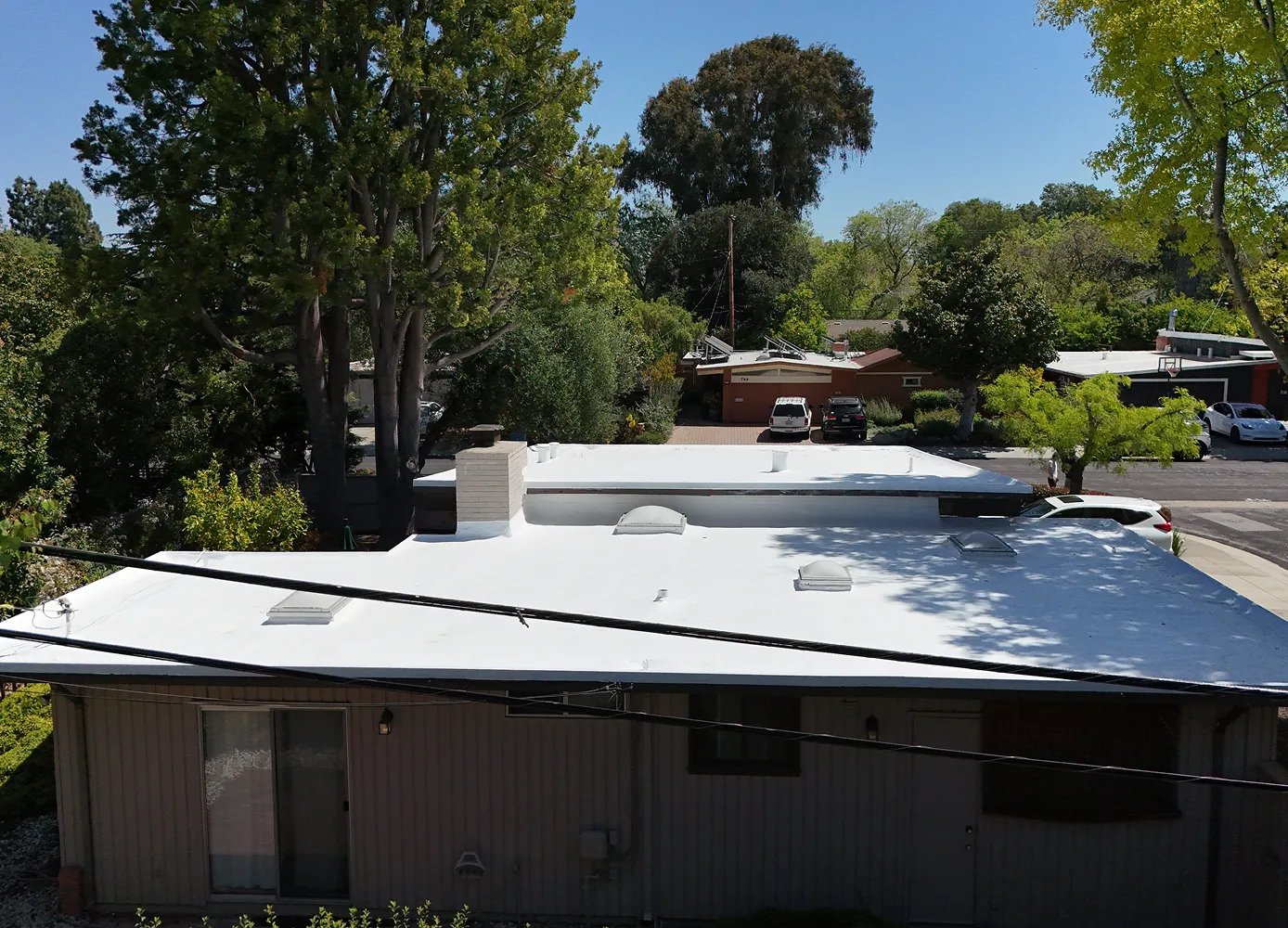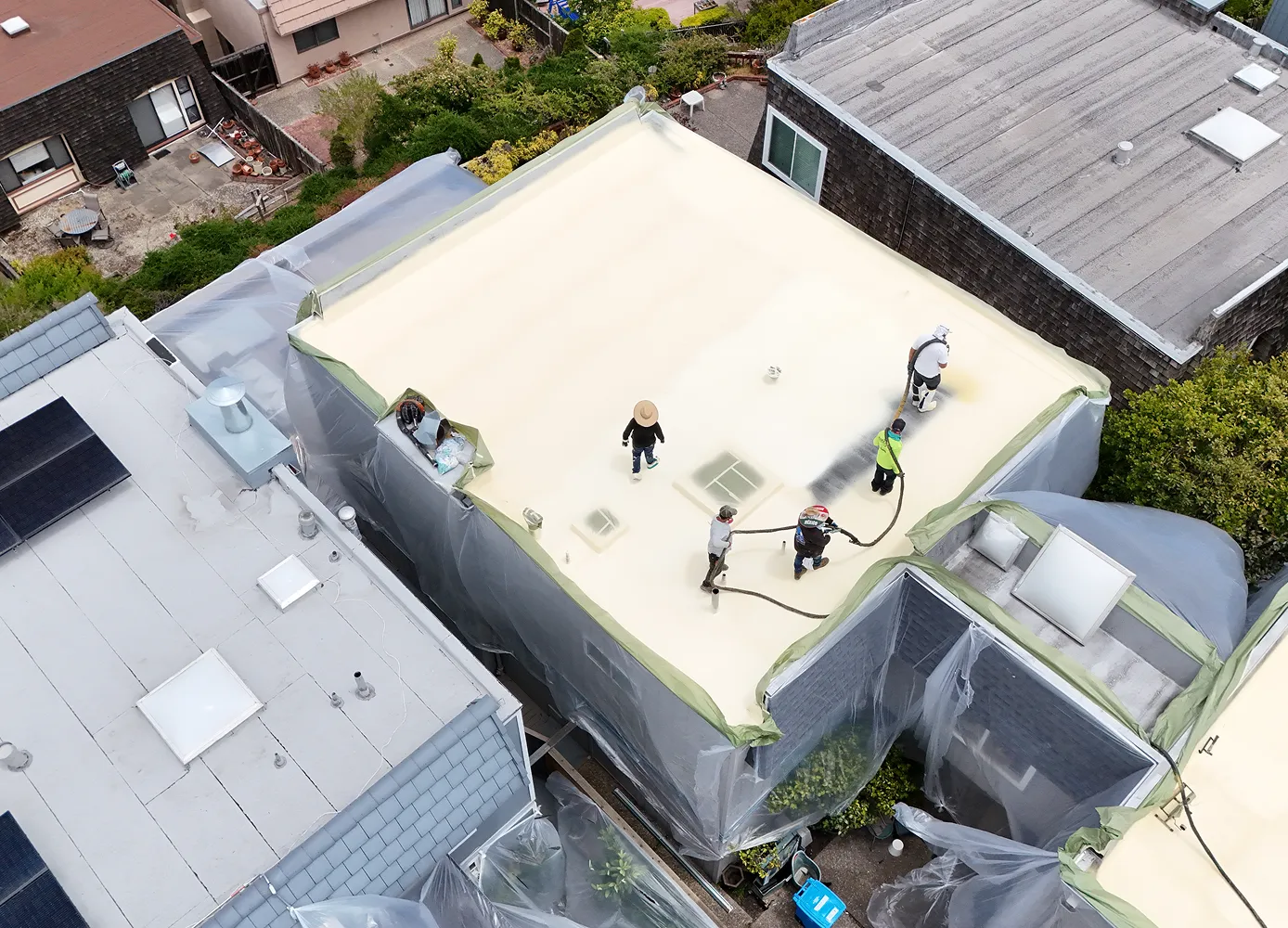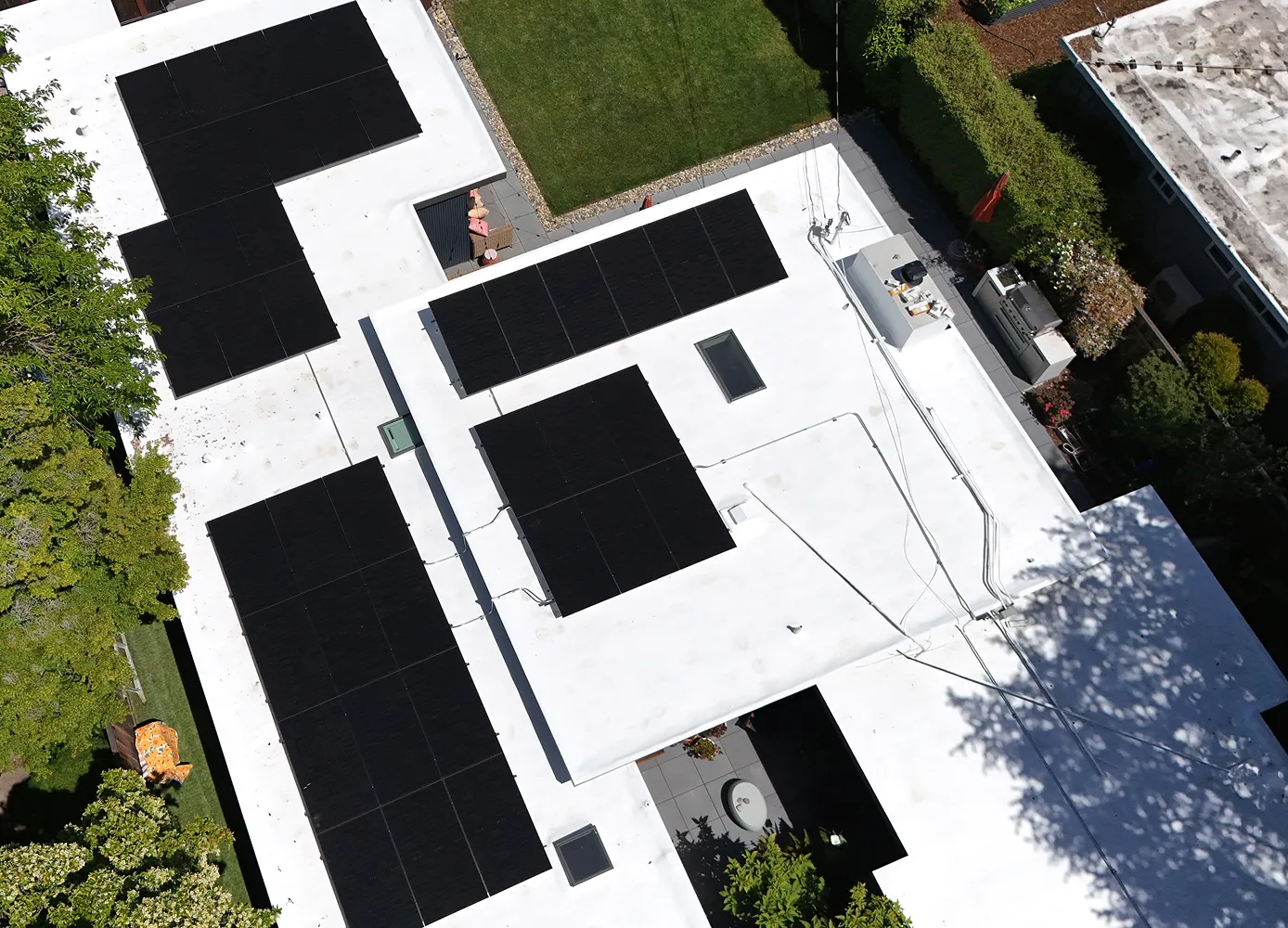⭐️⭐️⭐️⭐️⭐️
20,000+ Satisfied Customers & Over 30 years of Service
Trustindex verifies that the original source of the review is Google. We installed a solar system with batteries with Dura-Foam last year. The system is working fabulously – it went through a winter with several power outages, and we usually don’t even know we have an outage until PG&E informs us. What a relief. Dura-Foam’s owner Trevor Hill was responsive, open to new ideas & willing to work with new partners. We integrated a battery system from FranklinWH as well as a SPAN sub panel to maximize the use of the solar power we are producing. Dura-Foam worked with the FranklinWH rep Trevor Gould to design and install a robust system that is transparent, efficient and most of the time completely self-reliant. One glance now tells me how much I produce, what I use, and what I use it for. Franklin’s aGate & SPAN were just the combination for someone like me who really likes data. Trevor Hill was patient and willing to answer any questions during the installation, the plan set was comprehensive, the work his team did was excellent, and they met the occasional construction challenge with the willingness and expertise to make it right. Cooperation with FranklinWH was clearly excellent. And finally, Trevor Hill even put together a full package of cohesive documentation for the CPA to document everything for the tax credit. 5 stars all around for the entire team and the products that make up our wonderful system.Trustindex verifies that the original source of the review is Google. I had contacted Durafoam and talked to Trevor about some minor roof work earlier this year. He was very responsive and got that done quickly. We eventually had them resurface our 20+ year old foam roof in summer and they were able to fit us on short notice. Always cheerful, Ali was a pleasure to work with. He and his crew were hardworking, as well as meticulous, and took time to protect the fruit and vegetable plantings in my backyard. Anthony, who's in charge of ops, was here a couple times and helped us resolve some logistical issue on the project. We are very happy with the quality of the roof work. Ali's team was able to accommodate our schedule and completed the job just as house guests AND a heat wave were expected at the same time! Thanks to our newly resurfaced roof, our home, which has no AC, weathered several extended heat waves of 90-100+ F this summer comfortably. While foam roofs are not cheap, they sure make severely weather more bearable! I totally recommend Durafoam to anyone looking for a great foam roof contractor!Trustindex verifies that the original source of the review is Google. They know what they are doing. Would recommend to friends and Family.Trustindex verifies that the original source of the review is Google. We recently needed a roof inspection on short notice for insurance purposes. Trevor from Dura Foam followed up quickly to our call. He helped us out, and gave us the documentation we needed to avoid a bad situation. We really appreciate their great response and workmanship!Trustindex verifies that the original source of the review is Google. Dura-Foam Roofing & Solar Center were really easy to work with! I would definitely recommend them to anyone with roofing issues. They responded to my inquiry and were able to get someone out to look at our roof quickly. I'll definitely reach out again in the future if we have any other issues that come up!Trustindex verifies that the original source of the review is Google. Dura-Foam Roofing & Solar Center did a fantastic job repairing our foam roof after it was damaged by an enormous fallen tree. Lusio, David, and Emiliano each performed different parts of the complicated job. They were all very professional and cordial. The work was performed efficiently, neatly and on schedule. And Isaac, the office staff person who coordinated our job, was a pleasure to work with. We couldn't have been happier. I highly recommend this company!Trustindex verifies that the original source of the review is Google. A Bay Area treasure. Look at the pictures and you will see the people that you will be working with. They pose like a family and that is exactly how it feels to work with them. 9 years and 6 months after my roof and solar project was installed, I had an issue with my solar generation. I called Dura-Foam and was surprised that they remembered me, my home and the installation. Anthony and Lusio came out and quickly identified the issue. Hard working and professional, they took the time to double-check everything and allay my concerns. They stand behind their work and did not charge me for the service call even though it has almost been 10 years since the install. If you have a roof (especially an Eichler) you need to give these folks a call. Honest, courteous and professional Dura-Foam is the right call for roofing and solar.Trustindex verifies that the original source of the review is Google. We were very satisfied with the service. We found the workers were very cordial and we appreciate it!
Spray polyurethane foam (SPF) is widely recognized as a highly effective building envelope material, with roofing systems being one of two core application categories (the second being building envelope insulation for walls, ceilings and floors). A high-performance product with many exceptional benefits, spray foam has gained market share with wide adoption by builders and roofing contractors. Like many building products, proper installation should always be performed by a professional installer utilizing proper handling and installation techniques, with safety precautions employed and followed.
In roofing systems, the foam serves dual purposes as a protective roofing material and as a thermal insulation solution.
A roof’s main purpose is to protect what is underneath it. SPF roofing systems provide durable protection for the structure below. Spray foam is lightweight, as most SPF roof systems weigh less than a pound per square foot when installed. SPF is also seamless and self-flashing, and highly resistant to adverse weather, wind uplift and foot traffic. Once installed, it requires minimal maintenance, providing increased strength to the roof. It performs well across all geographic regions and climates.
SPF also provides superb capabilities as both an air and water barrier. Not only does it protect against water and moisture intrusion, but it also reduces air movement through the roof system, improving indoor air quality and lowering the energy use of the building.
Because the roof of any structure is often a major source of heat loss, the insulating qualities of the SPF provide superb indoor temperature control and energy efficiency. As a thermal insulator, the foam has one of the highest R-values per inch of all roofing insulations; because spray foam is fully adhered, there are no thermal shunts from fasteners. Keeping warmth in the building during colder months and heat out in hotter months, the foam reduces heating and air conditioning demands, lowering energy costs for the life of the product, which independent studies cite at approximately 50 years or more with proper maintenance. In hot climates, reflective roof coatings may also be applied over the SPF to further reduce cooling costs.
Later, in 2003, thinking the foam roof was ‘old’ the polyurethane foam was torn off and replaced with what they were told was a ‘state of the art’ EPDM rubber roofing (single ply roofing). Through misinformation SMG was lead to believe that EPDM was a superior roofing material. The manufacturer guaranteed the new roof to withstand winds up to 130mph. When Hurricane Katrina struck in 2005, sub 100mph winds completely blew off most of the EPDM roof membrane. The single ply EPDM membrane failed after just two years at wind speeds substantially less than promised.
Roof performance is not measured by one factor alone (such as R-value). Rather, the success of the roof system is properly assessed by reviewing combined considerations for air movement, moisture control, health, safety, durability, occupant comfort and energy efficiency — with SPF scoring high marks in each category.
While the benefits of SPF are immense, they are optimized with the safe and proper installation of the product. Because SPF is essentially formed onsite during the installation, there are specific guidelines, techniques and measures that need to be taken to realize product performance and safety.
• Equipment care. The care of professional SPF installation equipment is imperative to ensure safety, proper installation and the optimum performance of SPF. Equipment should be regularly inspected, cleaned and repaired. Proper storage and maintenance of all equipment is critical to keeping the equipment in running order. Contractors should have a supply of spare parts in each rig to minimize downtime should equipment failure occur during foam installation.
• Proper storage. Spray foam chemicals must always be stored within the manufacturer’s suggested temperature range. Storing product outside of these temperature parameters can lead to reduced shelf life, making the product difficult to apply correctly. During installation, proportioners should be set to the manufacturer-recommended temperatures and pressures to produce ideal SPF.
• Safety precautions and attire. Spray polyurethane foam is formed on the jobsite by mixing equal volumes of two liquid components, known as the “A-side” and “B-side.” The A-side contains polymeric isocyanates, or pMDI. The B-side consists of proprietary blends of polyols, blowing agents, catalysts, fire retardants and surfactants. Manufacturers provide sets of A-component and B-component, typically in 55-gallon drums.
Chemical vapors and aerosols developed during application and for short periods thereafter must be considered. Appropriate protective measures must be employed to minimize risks associated with overexposure through inhalation or skin and eye contact. These measures include adequate ventilation during installation, safety training for all those involved in installation, use of personal protective equipment (PPE) and a medical surveillance program for field crews. PPE for chemical protection includes a full body suit and headsock covering the skin, along with nitrile gloves and eye protection. Respiratory protection for roofing includes an air purifying respirator (APR) with organic vapor cartridges (unlike interior, or confined space installation, which requires the use of supplied air respirators [SAR]). In accordance with OSHA, all roofing contractors must employ proper fall protection devices and methods.
Additionally, overspray from SPF roofing applications must be controlled to prevent it getting on unintended surfaces. Wind conditions may necessitate the use of wind screens (typically fabricated using frames of PVC pipe or lightweight wood and plastic screening). Strong winds may require the suspension of work until more favorable conditions prevail. Helpers in the vicinity of spray foam applications (such as wind screen holders and hose pullers) need to wear appropriate PPE.
• Surface evaluation. SPF has excellent adhesion to a variety of substrates including BUR, clay and concrete tile, shingles, metal, wood and concrete. Existing roof surfaces must be dry and free of oils, grease, dirt and debris that could affect adhesion. Since it adds little weight and can be applied in varying thickness to add slope and fill in low areas, spray foam roofing systems are often used as re-cover systems over existing roofs and are recognized for this use by the NRCA Weatherproofing Guidelines.
It is also important to assess weather conditions when applying spray foam. As with other roofing systems, the product may be applied in a wide variety of climatic conditions, however it is important to follow the manufacturer’s recommendations. The spray foam and protective coating should not be installed when there is ice, frost, surface moisture or visible dampness present on the surface to be covered. SPFA has published a guidance document on how to evaluate an existing roof prior to SPF application titled AY-138 “Guideline for Roof Assembly Evaluation for Spray Polyurethane Foam (SPF) Roof System” available as a free download from the Technical page of the SPFA website (www.sprayfoam.org).
• Selection of appropriate products. A wide range of polyurethane foam products is available in various densities and reactivity, each exhibiting different performance characteristics such as temperature limitations and compressive Strength. Selection of the foam also affects installation characteristics, including the maximum lift thickness per pass, allowable substrate temperatures, etc., that in turn affect foam performance. SPFA publishes a guidance document, AY-104 “Spray Polyurethane Foam Systems for New and Remedial Roofing,” to assist in the selection of a specific roofing foam product.
• Preparation and priming. In many SPF roof system installations, priming of the substrate surface is required. Primers can greatly enhance adhesion between the SPF and existing substrates and roofing systems, or between SPF and existing layers of scarified foam, or between new SPF and protective coatings. Primers can help seal porous substrates, inhibit corrosion of metal substrates, and darken the substrates to increase solar heat gain (surface temperatures) and remove moisture. SPFA has published a guidance document on selection and use of primers for SPF roof systems, AY-143 “Primers: Why, When and How to Use Them.”
• Installation of protective coatings and coverings. Coating selection is dependent on climate and expected weather loads such as wind, rain, hail and solar exposure, as well as the durability and maintenance schedule for the roof system. AY-102 “A Guide for Selection of Elastomeric Protective Coatings Over Sprayed Polyurethane Foam” can help to select the proper coating for SPF roof systems.
Spray foam roofs may also be finished with aggregate, either loosely applied to the cured spray foam surface or embedded into wet coating. AY-110 “Spray Polyurethane Foam Aggregate Systems for New and Remedial Roofing” provides guidelines for the use of aggregate as a protective covering system.
All of the installation considerations listed here represent basic and essential practices for the installation of SPF for roofing applications. The best way to ensure these procedures and guidelines are followed is to utilize a professional and experienced SPF contractor. The Spray Polyurethane Foam Alliance Professional Certification Program (PCP) is also available to all professionals involved in SPF installation and allows contractors to demonstrate their knowledge, skills and abilities. The number of certified installers is rapidly growing throughout the country and represents the industry’s leadership in spray foam installation and safety practices. Proper installation techniques can optimize the product’s reputation as a premium building envelope solution, improve safety and lead to the overall success of the projects that rely on this high-performance technology.
Rick Duncan is the Technical Director of the Spray Polyurethane Foam Alliance (SPFA), the industry’s leading organization representing contractors, material and equipment manufacturers, distributors and industry consultants. The SPFA promotes best practices in the installation of spray foam and offers a Professional Certification Program to all those involved in the installation of the product. For more information, visit www.sprayfoam.org.
These examples highlight why foam roofing is not just an alternative but the preferred solution for businesses looking for unmatched durability, energy efficiency, and cost savings.



Trusted roofing and solar solutions built for strength, efficiency, and long-term protection tailored to your home’s needs.
Get important tips on keeping your roof efficient and safe in the Bay Area!
© 2025 All Rights Reserved Dura-Foam